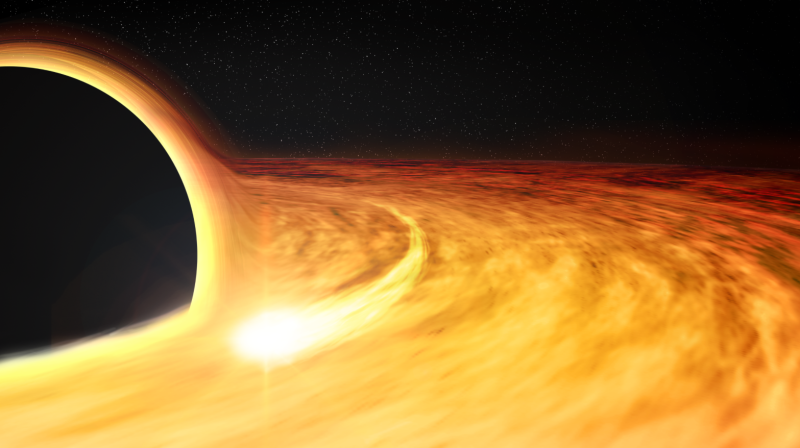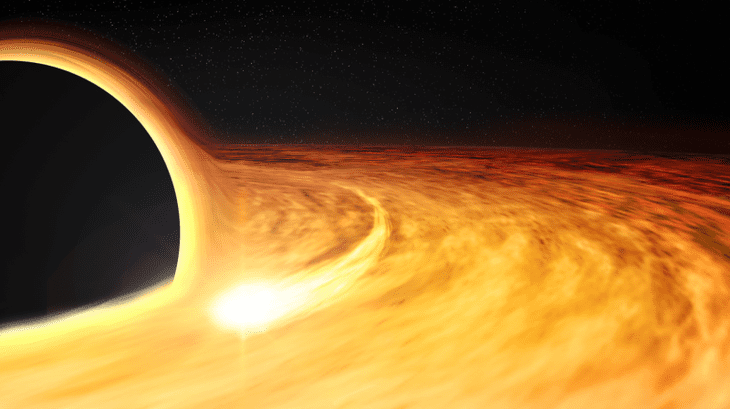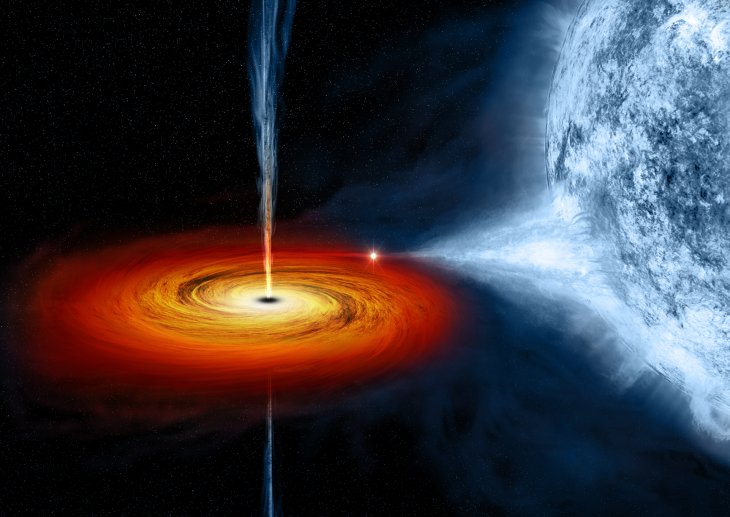Now We Can Know How Fast A Black Hole Spins Due To A Star Slamming Into It
Parvati Misra - Jan 14, 2019

They are expecting to measure hundreds of such events to gather a better understanding of black holes’ properties.
- Scientists Research Black Holes In A Bid To Build Quantum Teleporter
- Scientist Team Behind First Ever Image Of A Black Hole Wins $3 Million Breakthrough Prize
- NASA Released A New Black Hole Simulation And It's Mesmerizing
Scientists have concluded that a black hole spins “super-fast” by evaluating a star falling into it.
It can be difficult to know the exact dimension of black holes if they do nothing. However, when the black holes collide into one another or release objects of matter, the task can be feasible. Recently, scientists have successfully measured the spin and mass of a considerably huge black hole by evaluating the star-eating phenomenon known as tidal disruption. These events could open a new path to grasp the knowledge of black holes’ properties.

There have been many ways to measure actively accreting black holes or grasp more matter under the gravity’s influence. However, the Einstein Postdoctoral Fellow, Dheeraj Pasham from MIT Kavli Institute, commented that the measurement was distinct to an extent when they could calculate the spin of inactive black holes. Of course, everything changes when the star-eating phenomenon happened.
A robotic sky survey known as ASASSN (All-Sky Automated Survey for SuperNovae), captured a flash on November 22nd, 2014. This flash named ASASSN – 14li had some similarities with how the gravity of black holes crumbs a star to many bits, which happens at the middle of the host galaxy. The scientists then sought for the “quasi-periodic oscillations" occurring repeatedly but modifying X-rays' patterns that make difference in their power. The events presumably originated from considerably near the black hole. They have got the desirable data via 02 X-ray telescopes.
The spin and mass of the black hole can be inferred from the X-ray radiations. As for this case, its spin equaled approximately 50 percent of the light speed, and its mass was ranging from a hundred thousand to 10 million times that of our Sun.

These values were still only hinged on a prototype, as stated by Pashnam, and the same data could be depicted in many ways. We shouldn’t put much consideration onto these values yet. However, at least we have found a new method to measure the properties of black holes.
And that is the goal, according to Pasham, the star-eating phenomena only occur in a galaxy each one thousand to ten thousand years. They are expecting to measure hundreds of such events to gather a better understanding of black holes’ properties.
Featured Stories

Features - Jul 01, 2025
What Are The Fastest Passenger Vehicles Ever Created?

Features - Jun 25, 2025
Japan Hydrogen Breakthrough: Scientists Crack the Clean Energy Code with...

ICT News - Jun 25, 2025
AI Intimidation Tactics: CEOs Turn Flawed Technology Into Employee Fear Machine

Review - Jun 25, 2025
Windows 11 Problems: Is Microsoft's "Best" OS Actually Getting Worse?

Features - Jun 22, 2025
Telegram Founder Pavel Durov Plans to Split $14 Billion Fortune Among 106 Children

ICT News - Jun 22, 2025
Neuralink Telepathy Chip Enables Quadriplegic Rob Greiner to Control Games with...

Features - Jun 21, 2025
This Over $100 Bottle Has Nothing But Fresh Air Inside

Features - Jun 18, 2025
Best Mobile VPN Apps for Gaming 2025: Complete Guide

Features - Jun 18, 2025
A Math Formula Tells Us How Long Everything Will Live

Features - Jun 16, 2025
Comments
Sort by Newest | Popular